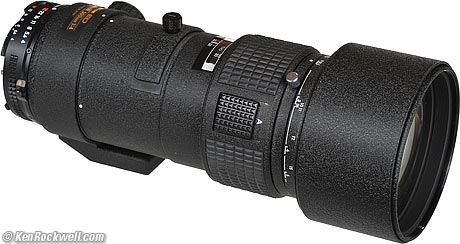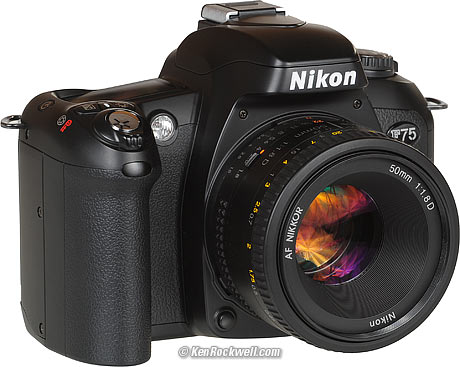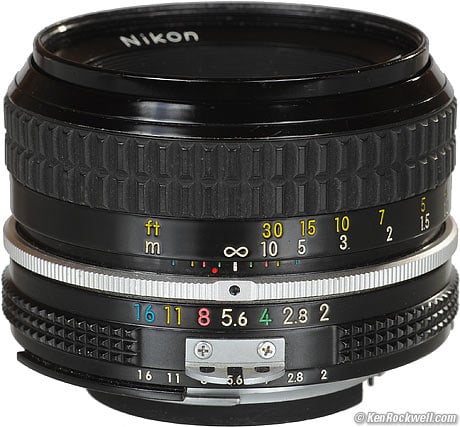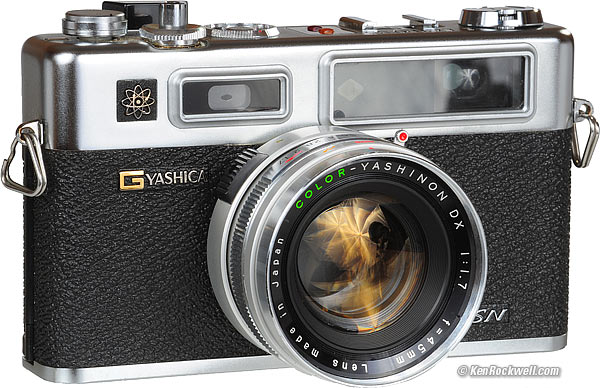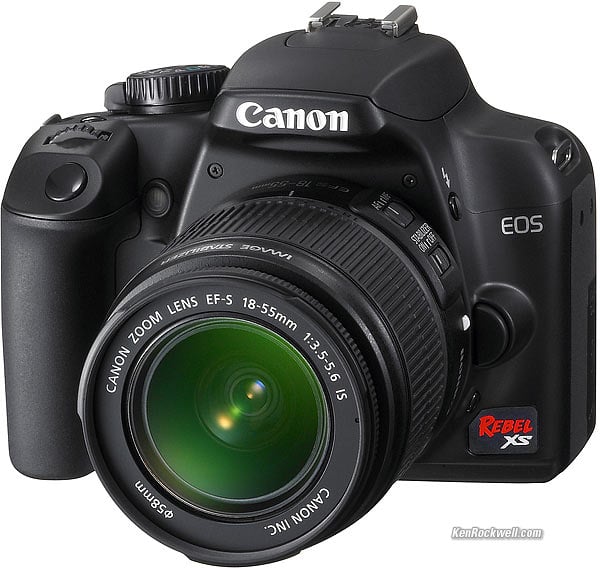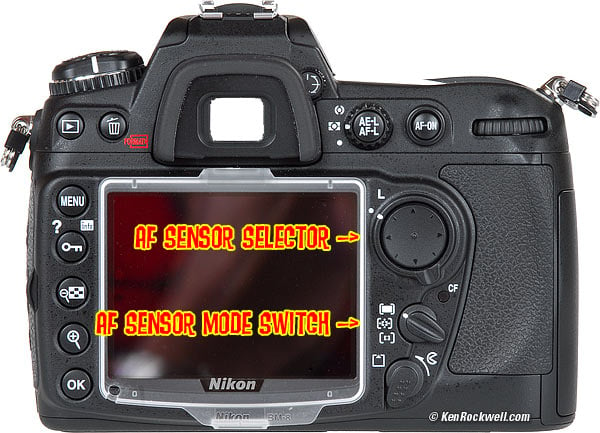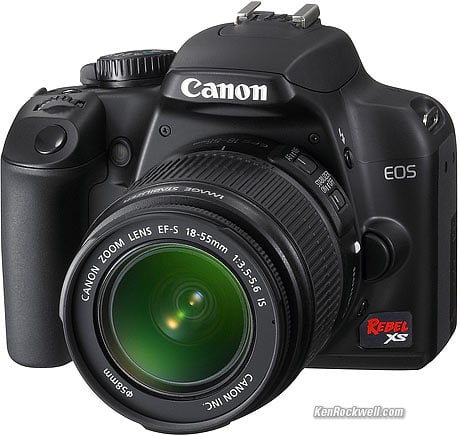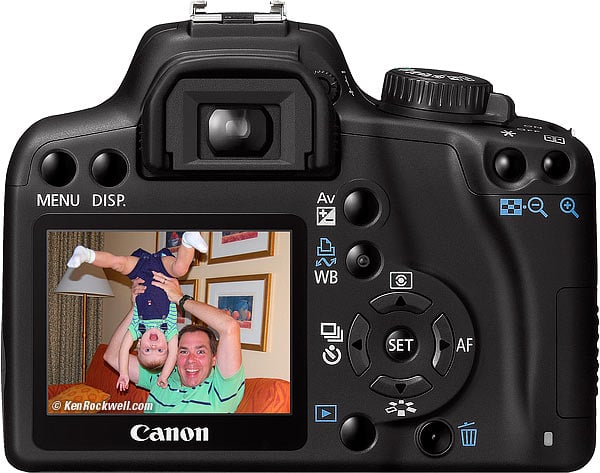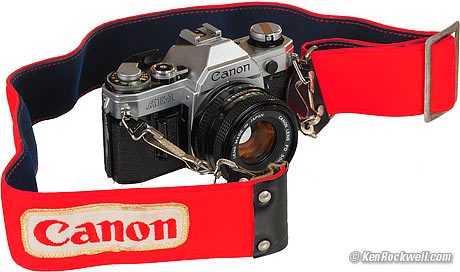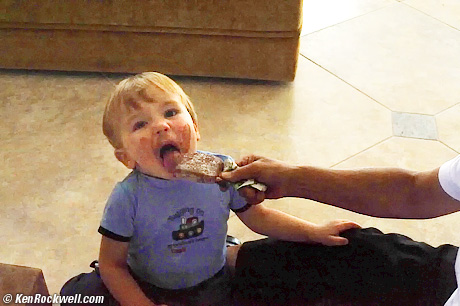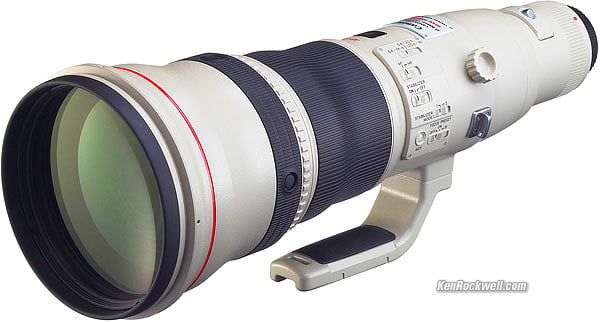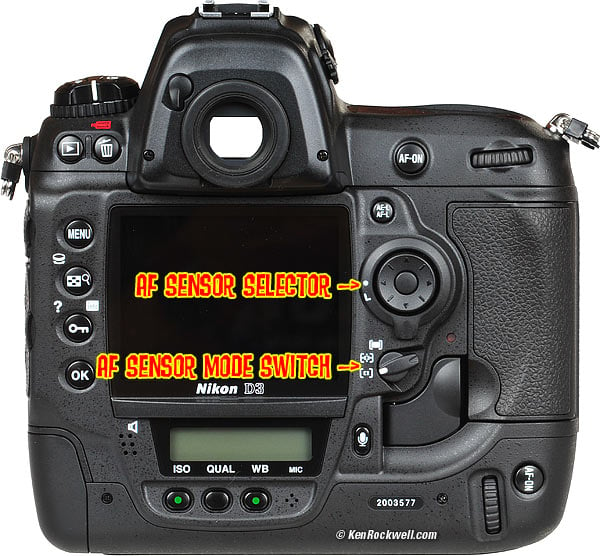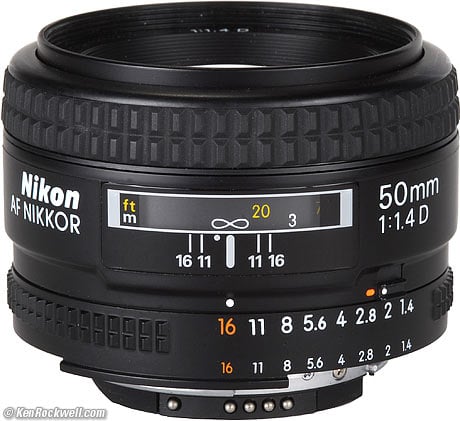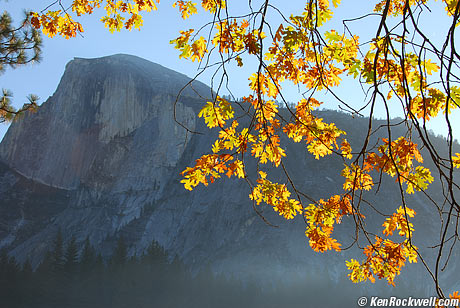Home Search Gallery How-To Books Links Workshops About Contact
What was new in June 2008 RSS I get my
goodies at Ritz, Amazon, Adorama.
It helps me
30 June 2008, Monday
Updated my Nikon 300mm f/4 AF review. Nikon N75 with Nikon 50mm f/1.8D. Updated my Nikon N75 review. It's probably the best cheapest way to shoot FX digital. Maybe we'll hear about the Nikon D700 tonight, USA time.
27 June 2008, Friday NEW: HDTV. I spent the week writing up some basics. I hope it helps. Now I'll be ready for any new Nikons confirmed for next week. See: Who am I and what do I know about HDTV? Making the Picture Fill the Screen Lip Sync: Getting the Words to Match the Picture
26 June 2008, Thursday Rumor Mill: Lots of rumors are pointing to the introduction of the Nikon D700 next week. NEW: FUD. Another article I had to write to explain some things in the HDTV article under construction. Nikon 50mm f/2 AI (c. 1978). Nikon 50mm f/2 AI on D3: Works great. Super-sharp even at f/2 and has little distortion. Contrast is lower at f/2 and much better at f/2.8, and is perfect by f/4. News: Zeiss 18mm f/3.5 manual focus for D3/D3x and film cameras.
25 June 2008, Wednesday Addition: I tried the Nikon D3's (and thus D300's) HDMI output into a 60" plasma HDTV in the course of piddling for my HDTV articles. THe HDMI output works great, and if you set your camera in Live View and set it by the TV, your pals can watch themselves watching TV! Also added three new clever ideas I hope are added to the D3 and D300.
24 June 2008, Tuesday I'm not doing a new HDTV site, just an article (which is growing into a few) about how to understand what's really going on in HDTV, then how to pick the best set for you, and once you have it, how to get the fantastic images you were expecting. I'll have an appendix on sound; audio could take another decade to tell (I know more about audio than video).
23 June 2008, Monday Polarizers: Call me an idiot (you won't be the first), but even though I know how LCDs work, I just realized, after staring at mine 14 hours a day for the past couple of years, that LCDs are highly polarized. Peer at your screen through an polarizing filter, and you can turn it black! Looking t its reflection in my glass desktop, it doesn't reflect off it at the magic angle! Likewise, camera LCDs are polarized, too. Baby Ryan and Baby Katie have new photos and videos posted. Also Baby Ryan is now Google's number one result for "baby Ryan." He and Katie have been Google's number one result for "Katie Rockwell" and "Ryan Rockwell" since each was born, no big deal. I've been writing a secret HDTV article all day, and I forgot that it may take a little longer than I thought. I started this site in 1999 to jot down what little I knew about photography, and 9 years later, I'm still working on it. I know more about HDTV than I do photography, so it's taking a little while.
20 June 2008, Friday Thanks readers: Many of you were kind enough to answer my questions about the links above and HDTV. The answers are: Looks like no one minds the search box and links above, and many people like them, so they stay. Everyone wants info on HDTV, so look for an article I didn't want to have to write soon. HDTV Summary: Your set is much less important than source materiel. DVD, HD-DVD and Blu-Ray are all great sources and even regular definition DVDs (movie DVDs from Hollywood, not your wedding video) looks fantastic on a 60" HD plasma. Cable TV and Satellite vary, as does broadcast TV. Motion problems come from the level of MPEG compression in your source and how it got transmitted in twelve links to your set, not your choice of set. The only consistently good source of broadcast programming I've seen is Discovery HD. Most of the other cable channels and broadcast TV are mostly up-converted SD, which means not HDTV at all. Broadcast and cable HDTV are awful most of the time because of all the black bars, or worse, the fact that the details and action only happen in the middle of the wide screen. Most of the time on ESPN, the sides of the screen are just junk. You bought a big screen for that? Worse, when the commercials come on, half your expensive set is black bars at top and bottom, and blue bars on the left and fright. I spent a decade designing HDTV hardware, and another decade helping design most of Hollywood's studios, and at home, all we watch are DVDs (HD and regular) and regular definition broadcast because its the only feed that we can make fill our screen. Important is to have a set with an intelligent wide-stretching algorithm. Few sets do this well. For screens, the very best is a CRT (tube). That' what used in Hollywood to create the movie DVDs because the colors, lights, grays and blacks are perfect. Plasma and LCD aren't as good (and are not used for critical color grading) because they can't reproduce colors perfectly. Look for banding and artifacts, and mostly look for skin tones that are true from highlight to shadow. Most plasma do nasty things to subtle colors. Brightness and internal widths of DSP architectures in sets don't matter. Just put on a DVD and look at the color fidelity. I kid you not, a cheap tube set usually has better color fidelity. Just relax and watch a couple of good DVDs (not cable and not TV) at the store. How do the colors look? Most broadcasts look crappy compared to DVDs, even standard-def DVDs. Try a DLP rear projection set. They're clunkier, but if you have a dark room, they may give the best picture and cost less. DLP projectors are what's used for digital cinema (movie theatre) projectors. When I say most broadcast sucks, I'm saying "most" because every once in a while you get something truly wonderful on HD broadcast. It's just that with all the HD gear I sold into Hollywood, most of what's broadcast are sloppy SD (standard definition) pictures. 1080 vs 720? Doesn't matter! I've sat in on telecine sessions in Hollywood where we had a matched pair of $30,000 Sony monitors: one with HD and the other an SD downconversion. They looked the same. Why? Because it was a real movie that was being transferred. Sure, with nature videos and test patterns and still images shown in stores to help sell sets you can see a huge difference with HD, but with anything that moves (i.e., anything worth watching), you can't. Try reading a moving newspaper: you can't see detail while it's in motion. More details later in its own article. I can't tell you what set to buy since they change every week, but I will try to teach you what to look for to pick and get the very best image (look for color accuracy and watch DVDs). Sound is another day's work. NEW: Nikon 105mm Lens Sharpness Comparison. I rounded up a different thirty different lenses, shot them off against each other on the D300/D3X, and spent another day going blind presenting the results. FUD and Dirt: FUD is a marketing acronym for fear, uncertainty, and doubt. When I worked in sales and marketing, we simply used it like a word, pronounced "fud," and was in daily use just like the word "price" known to most of the rest of the public. (Contrast this to ISO, also an acronym, which is pronounced "eye ess oh" and never as "eyeso.") Marketers love to throw up the tiniest little thing to instill FUD in buyers' minds, which is a powerful tool to get buyers to do what marketers want People are always afraid of the unknown. If one brand has no product, they'll suggest something as part of a FUD campaign to prevent potential customers from buying the competitor's product instead. For instance, back when Olympus had very few lenses available for their 4:3 digital SLRs, they threw up FUD to stop people from going to Nikon and Canon, each of which have vast selections of superb lenses, by claiming that only Olympus' lenses were especially "digitally optimized," while of course Nikon and Canon's existing lines of SLR lenses weren't. Today, the biggest FUD thrown out is the fear of sensor dust. Camera makers offer magic sensor cleaners to try to get people to buy their cameras over someone else's. This is also done to get people who don't need a new camera to buy one. Guess what: The best pro cameras don't even have sensor cleaners! The $5,000 Nikon D3 doesn't have one. I've never had any problems with dust. It was a worse problem with film, printing and projection. Today if I have a spot, I J-tool it out in Photoshop. If it gets bad, only twice out of over 100,000 shots on numerous cameras have I sent the camera out for cleaning. I usually jam a Shop-vac into the camera to suck it. I swap a LOT of lenses. I made over a hundred lens changes just in doing my 200mm comparisons. I've left cameras open outside for a moment while I went back to my case to get another lens. No problems!
19 June 2008, Thursday NEW: Nikon 200mm Lens Sharpness Comparison. I rounded up thirty different lenses, shot them off against each other on the D300/D3X, and spend a day going blind presenting the results. This is the world's first and only direct comparison of this many lenses at once, covering 40 years of products. Once and for all we can compare all of these lenses on even ground: zoom vs. fixed, AF vs. manual focus. This compares central sharpness. I rounded up fewer lenses for a comparison of FX corner sharpness last month.
18 June 2008, Wednesday NEW: Nikon D3, Canon 5D, Nikon D40 and Film Compared in 20x30" prints. We'll see who's who for serious landscape prints. NEW: Nikon D700. Rumors confirm. Refinement: I've completely re-done my Nikon 70-200mm VR, TC-14E, TC-17E and TC-20E reviews for use with the D3. Thanks Bob and Michael, who loaned me some of this gear just before baby Katie was born and distracted me these past few weeks.
17 June 2008, Tuesday Nikon 135mm f/2.8 Series E: Golly, this is a very, very sharp lens on the D3, even at f/2.8. More when I get to 135mm lens reviews. I still need to complete the 70-200mm VR and ultimate 105mm and 200mm sharpness shootouts I started last month. Busted: Heh heh, caught the little guy with the Casio EX-V8. (may need Quick Time to play.) The still image above was extracted from the video clip by the Casio and I added text in Photoshop. The dance video was titled in iMovie HD. Big Prints Cheap: Adorama has 20x30" (50x75cm) prints on special for $12.97, and 4x6" (10x15cm) for a new record low 8¢ each! 8¢ is so cheap I bet your computer doens't even have a "¢" key anymore! (I do this site on a manual Royal typewriter from 1964.) NEW: Dynamic Range. A critical, basic topic I've forgotten to address previously. NEW: Killer Robots and Photography. Another philosophy piece. I Updated my Nikon 18-70mm Review. NEW: Yashica Electro 35 GSN Review, the top model of one of the most popular consumer 35mm cameras of the 1960s and 1970s. For $10, you can get the same sharpness as a Nikon D3, with a lot less to carry! How do you like the wider page and photos in that review?
16 June 2008, Monday Interesting: The Canon Rebel XS still isn't public in the USA.
13 June 2008, Friday How to Use Your Nikon's AF System. The Nikon AF System: I now have six popular Nikons in my collection of how to use their AF systems. I'll be adding more soon, like the old D70 and F100 and today's F6. Your Camera Doesn't Matter: Gianmichele wrote from Italy that he bought a camera. His girlfriend got them a trip to New York so he could take pictures. While there, she wanted a to take some pictures, too, so she borrowed his camera and here's what she snapped. She didn't know anything about photography, and especially knew nothing about cameras. Photography is all about the ability to see. Cameras do all the technical stuff so we don't have to. It's not the 1950s anymore. All we need to know is some very basic adjustments and just go shoot. The shots on her gallery? All made with a mere Nikon D80, and the lens? Not even the kit lens or a zoom: she used a fixed 50mm lens for everything. I wish I shot this well! Italians have the knack when it comes to art. Gianmichele asked what I thought about her now wanting to go take photography classes. "Why?" I asked. Does it look look she's missing anything? I can't imagine how her photos could get any better! For people with vision, photo classes only confuse with rules that no longer apply, and never did. Photo classes were needed in the 1950s, but today, interested people should be taking art, drawing, painting, color and seeing classes instead. The good photographers have degrees in art and painting, not in photography. Ansel Adams studied music, never photography. Jay Maisel has a degree in painting from Yale, not photography. Some people spend all day in front of a computer trying to make photos happen that never will. Photos happen in the camera. Rules, pixels, MTFs, RAW and HDR have nothing to do with photography. All they do is distract people from ever making any real photos. I usually make my best shots when I head out with just one lens on my camera. I can concentrate on seeing and not on swapping lenses. Henri Cartier-Bresson used just a 50mm lens for decades and decades. Oh yes - Cartier-Bresson studied at numerous art schools. Louis Daguerre, inventor of the Daguerreotype, was a painter, too. Have you noticed that the only people telling you to buy a better camera are people trying to sell you one, like camera salesmen, camera companies, magazines and websites that get paid to advertise cameras, or photographers, friends and instructors who are trying to justify their own purchases of too much equipment? I've never met any genuinely accomplished photographer who told anyone that they needed to buy a better camera. Plenty of photo writers will tell you that, but not accomplished photographers.
12 June 2008, Thursday NEW: How to Use the Nikon D40x AF System. NEW: How to Use the Nikon D40 AF System. Observation: First review of the Leica M8 by an actual photographer. Michael Kamber, a seasoned photojournalist, has been shooting film Leicas for decades in combat. Today he's attached to the Baghdad bureau of the New York Times and has been shooting the Canon 5D and 1Ds for digital. These big cameras stuck out, so he decided to try a Leica digital hoping it would be less intrusive as he wandered the streets on the edges of combat and tried to blend in. I'll let you read his thoughts for yourself. All the other "reviews" out there are by hobbyists and collectors, not by people who shoot (and get shot at) for a living. As I read his work, the Leica digital is as I expected: a kludge which impresses collectors, but doesn't work for actual photography. Being fascinated by something has nothing to do with using it. Leica's technical development stopped in the 1950s when rangefinders finally went obsolete. Leica's newest SLR, the $3,600 R9, has the same technology as the 1983 Nikon FA. (Leica still hasn't developed an autofocus SLR.) Collectors still enjoy them, and film rangefinder cameras still have a place in today's journalism since they are smaller and lighter than SLRs. Heck, just the other month you'll see that the National Geographic article on North Dakota was shot on a film Leica (see the "on assignment" section of the magazine at the back.) I shopped for a Leica rangefinder last summer. The film Leica M7, which has auto exposure, could be almost as useful as a used Nikon FE. The FE sells for $100 used, and the M7 sells for just under $4,000 new. Then I discovered that I could get Japanese copies of the Leica M7, either the ugly Voigtländers for about $700 or the classy Zeiss Ikons for about $1,500. They use the same Leica lens mount, and have superior shutters with 1/125 flash sync. Today's film Leicas are still beyond primitive, with an inferior 1/50 sync speed. Criminy, the Nikon rangefinders of the 1950s had 1/60 sync. OK, so figure $1,500 for a Zeiss Ikon body that does almost what an FE does, but without through-the lens viewing. Then I noticed that today's Nikon F6 sold for the same $1,500 (a little more new today, and a little less used). I bought an F6, and it's the most incredibly good 35mm film camera I've ever used. It is the best 35mm film camera ever created, for the same price as a knock-off of a 50-year obsolete camera. If I need a small, quiet, inobtrusive and high performance film camera, I prefer the Konica Hexar, which is faster and quieter than any Leica. I'm not a journalist. If I was, the Leica film cameras are still useful. Just skip Leica for digital — Leica can't even make a full-frame digital camera.
11 June 2008, Wednesday NEW: How to Use the Nikon D80 AF System. RSS Fans: Thanks again to Vince, I've got an updated RSS feed. The new RSS ought to address some issues some were seeing, but I do often update this page many, many times a day (and today is no exception), so I doubt that it will fix the fact that today you may have gotten 28 notes that I've updated the page. Yes, lots more coming today, too! NEW: First American preview of Canon's not-for-USA-today EOS 1000D, and you're seeing it here first. Check out the superb cut-away images! Maybe we'll see it tomorrow in the USA, maybe not. Canon's Rebel XS / EOS 1000D / Kiss F is expected in the Orient in July 2008. It's an inexpensive, lightweight, 10 MP, 2.5" LCD DSLR. It doesn't exist for the USA. Is it the second coming of the AE-1? Cue the tennis stars and wide straps!
Canon AE-1.
Hey Japan: I take more than 9,999 pictures with each of my cameras. My Nikon D3 is up to 32,183 shots and I've only owned it six months. It's not fun everytime I pass another 10,000 shots and have the file numbers wrap around on the same shoot. Why do the the 8-digit file names still waste the first four places with DSC_, CIMG or IMG_ and only leave us four places for the file number? 1986 was 22 years ago; may we please use at least five places for file numbers, duh? This is like when American cars had only 5-figure odometers because they could barely last 99,999 miles. Especially disturbing is that Canon and Nikon each waste a precious place with a "_" just to shove it to us. Most computers made since 1980 can handle file names longer than 8 places. Would it be too much to ask to replace the _ with a significant figure, or make the files names a whopping 9 places long so we can get at least 5 useful places for file number? It also would make searching by file names far less ambigous.
10 June 2008, Tuesday Nikon D3 at ISO 50,000: messiest thing is the kid! Coming out of my studio (I was shooting product photos of a 1980s Canon AE-1, a 1950 Konica I, as well as both silver and black Nikon 75-150mm Series E lenses), Ryan was devouring an ice cream bar. Spinning and shooting instinctively, I made the shot still in the manual exposure mode from the studio: f/16 at 1/250. Nikon's shooting banks are defective in design because, even though I still have to change two of them when I come in or out of any situation, it still doesn't update the exposure mode. I made the 12 clicks needed to pull out of both "B" banks for my studio and into the "A" banks for most shooting, but the exposure mode was still in manual at f/16 and 1/250. I fixed the error on the next shot (f/1.4 at 1/125 at ISO 200), but I still had a shot which auto ISO had cranked to ISO 6,400 and was still black. I got curious, since math showed me I'd need a three stop push, so I pushed the JPG three stops in Photoshop to ISO 50,000. I dropped out the noise with Nik Dfine 2.0, and voilà, the dirtiest thing in the shot is the kid. Do you remember a year ago when ISO 1,600 was noisy on digital? Late-Morning Split: How to Use the NIkon AF System just split into a selector page for either of the new Setting the Nikon D300 AF System page, or the Setting the Nikon D3 AF System page. After lunch, I hope to add new pages for the D80, D60 and D40. This might be the first time I'll be adding pages like this so y'all can browse this site, instead of only Search it. As always, clicking the images gets you to the page, too. Almost all of the images on this site get you someplace when clicking them, even full-size images. (That's odd, my Yankee software's spell-checker doesn't recognize "y'all.") Early-Morning Edit: I edited and added better illustrations to How to Use the NIkon AF System. Maybe today I'll add the D80, D60 and D40 to it. I also need to finish up the 70-200 VR and TC reviews that I started before Baby Katie, as well as my World's Greatest 105mm and World's Greatest 200mm sharpness comparisons. Never before in the history of mankind has anyone been able to muster this many lenses into one place at one time for what may be the world's biggest, and therefore most useful, shootout. Darn junk mail: Drat. As a photographer, often you think that mail related to photography are real invitations. In my case, often they really are invitations to come shoot from the world over, like one yesterday from Guessous in Morocco. Sadly, one today with the subject line "Britney lingerie shoot" was just junk.
09 June 2008, Monday Freedom! Whoo Hoo!!! I've finally gotten down to the bottom of my eMail inbox after having our baby girl two weeks ago. It had over 1,000 messages in it, mostly good wishes for the new baby. Many thanks to all of you for the good wishes! Now I can read my real mail, and get back to writing something useful for a change, like the How to Use the NIkon AF System article I fleshed-out this weekend. New: Nikon D10 speculation. Does someone know something we don't? Great Photos! Want to see some great photography for a change, instead of the usual stuff which passes for it on the Internet? See onexposure.net, which is by invitation and jury review only. I somehow got in there, and even crazier, I also slipped into the new book they are publishing. This is serious art by the modern masters; you won't see anything from techies who call me stupid, like Askey, Reichmann, Morris or Hogan, there. Idiot no more! Fans of the Sigma SD10 also thought I was an idiot, and lambasted me at their site at sd9.org.uk. That website died from lack of interest. Quod erat demonstrandum, I'm not an idiot anymore New: The Canon 800mm f/5.6 IS is now shipping. Got birds? Got twelve grand? Go for it! It seems frivolous, but unlike dropping eight grand on a 1Ds Mk III, which goes obsolete in a couple of more years, Canon lenses will last you a very long time. This 800mm will work great on your old A2E or your future 1D Mk XXIV or EOS 240D, for instance.
07 June 2008, Saturday Cryptic Rear Controls, D300 and D3. NEW: How to Set the Nikon AF System. Good stuff!
06 June 2008, Friday Me on the streets of New York: I'm told that my head shot is in the printed June 2008 edition of PDN Magazine, on newsstands everywhere now. The printed edition has a teaser to get you to read PDN's Gear Guide, in which I'll have a few abbreviated reviews. Here's PDN's short version of my Nikon 15mm f/5.6 review. Olympic Torch: Was it our imagination, or was the dude we saw running north along PCH with a flaming torch in San Diego today at lunchtime really the Olympic runner? Last time he was followed by throngs of fans, well-wishers and press, but this dude was all by himself. Update: I edited The Megapixel Myth to make it current for 2008. I don't think anyone who shoots more than they read about it still worries about pixel counts. I know my pro friends don't, and I usually shoot my D3 set back to 6MP (medium). New Link: Added landscape master Leping Zha, Ph.D. to my Links page. Addition: Added an illustration of my kid sleeping with his eyes open in The Two Hour Rule.
05 June 2008, Thursday I broke Google! Looks like so many people looked at my example website at sites.google.com that I exceeded whatever limit they have on page views. So much for free industrial-strength hosting, although I suspect Google probably backs it up well enough to withstand a moderate nuclear exchange. Price Club (Costco.com) Lab Online Update: I love Price Club (Costco) to death, but you have to pay to be a member to take advantage of any of this. That's why I don't mention them that often. Locals still call them Price Club here in San Diego where they started, while the rest of the world (and Costco itself) uses them their current name of Costco. I pull 12x18" (30x50cm) prints all day from my D40 at my local walk-in Price Club. Larger sizes come mail-order. Since everyone is using them for bigger prints I decided to log in and try ordering them for myself. 20x30" (50x70cm) prints are $9.99 each, and shipping was $6.57 for three. Give me a week for these to arrive and we'll see how the Canon 5D, Nikon D3 and D40 look on man-sized prints. It was trivial to create an account. I was impressed: when selecting photos for uploading, it went right to the PICTURES folder on my Mac, and created loads of thumbnails for easy selection. It didn't recognize nef, or my color-codes for my picks, but otherwise was easy. Read the license, but it looks like Costco also allows you unlimited storage. Unlike other photo sites, you aren't click-licensing them rights to use your photos for anything other than printing them for you. When uploading, I seem to need to click UPLOAD twice to get it going, otherwise, the image select panel goes away and nothing happens. When making enlargements, be sure to set the number of 4x6 prints to zero (it defaults at one), but do it after selecting the big prints otherwise you'll empty your cart. Be careful for big prints: their default is to upload reduced-resolution images, so you have to select the FULL RESOLUTION option manually when uploading each image. I see no way to determine which size you've uploaded other than by looking at the MB size of the optional CD they offer you. I goofed the first time, and the order system didn't balk at me trying to order a 20x30 from a reduced-rez upload; then again, reducing the rez from a 5D still leaves a lot of pixels. It didn't balk either asking for a 20x30" from my D40. When completing the order, I couldn't copy-and-paste my 13-digit member number; I had to type it! D40 Pulse: Looks like the D40 with 18-55mm lens is about $470 today, or $597 as a do-everything kit with 18-55 and 55-200 VR lenses. Man, I paid $599 for mine when it came out without the 55-200mm VR lens! Addition: I added more about the D3's 5:4 professional aspect ratio in my D3 Review. Astounding but True D3 Observation: While selecting shots of the family in iView, I was amazed when I noticed that vertical shots, two-up in the Light Table (full-screen comparison) mode, fit perfectly on my 30" screen with the D3 set to 5:4 aspect ratio. Weird, but true! I immediately did the math: 5:4 two-up sideways is 4:5, twice, or 8:5, or 1.6:1, the same aspect ratio as most Apple monitors like my 30" Cinema Display. Everyone deserves a 30" monitor, and they are a lot cheaper today than when I got mine. Not only are they cheaper, but a 30" display will last you for the lives of two computers. I keep a D3 function button set to Select Image Area, and often crop my verticals. The long, skinny 3:2 rectangle of DSLRs is just too long, especially for vertical shots.
04 June 2008, Wednesday Canon 5D, best digital landscape camera under $8,000. Canon 5D: I updated my review to reflect the fact that today you can buy a new 5D for only $1,900, which is a heck of a deal considering that the only thing with better image quality is the $8,000 1Ds Mk III. The 5D is sharper than the Nikon D3, which is a news and sports camera. I also included a camera-original © file to show what a 5D can do. If you look at my Canon 5D review page, I widened it to 770 pixels to fit in an example shot from Yosemite. Does this fit your screen, and do you find reading the text any better or worse? If you like the text, I may make all future reviews and revisions this size to provide even bigger images. Believe it or not, 99% of this website (including this page) still fits a 640x480 VGA screen. While I'm asking questions, are any of you still on dial-up (phone modems)? I used to worry myself sick about using small images and compressing them more so pages loaded faster, but when I publish huge pages loaded with images that would take 15 minutes to load on dial-up, like my 200mm sharpness comparison, no one whined. If all of you are on broadband, I won't worry and will use higher-quality images in my reviews and examples. Thanks! Free Websites for Everyone! Google does it again! Whoo Hoo! I made this website in just a few seconds. The only thing that took more than a second was to guess an URL that hadn't already been used by someone else. This is important stuff. It means that any idiot now can create and share anything he wants, for free, with the industrial-strength power of Google's servers. Just go to sites.google.com and have at it. It's easy and free. Google magically writes the site and hosts it for you. All you do is point and click. It's easier to create a website for free today with Google's well-designed system than old-style pay-for garbage like Microsoft Office was just to write a letter. Want to post pictures? No need to reduce or resize them; just point to them on your hard drive (or attached camera) and Goog resizes them as you like to fit your page layout. If you upload camera-original files, clicking the images in your new website gives you the huge camera-original files! Seeing how it took me longer to choose a user name at Goog than it does for me to register a domain name, that brings me to another reality of today's internet. In the early 1990s, your URL (web address, like KenRockwell.com) meant everything because that was how people found you. It made news when the first URL to fetch a price of over one million dollars was Business.com. The million dollars bought just the URL, not a business or a website. People navigated the Internet by guessing an URL for what they wanted, and then following HTML links hoping to find what they needed. My Links page is from those days, since there were no search engines. Later in the 1990s we had Alta Vista and Dogpile and Google to help us find things, but URLs were still the way people usually found things. As of 2008, I think only we webmasters still use the old URLs. Most normal people find things by Googling them. Why should I guess if my accountant's website is a .com or a .net, when typing his name into Google gets me there without having to guess if there is an "-inc" or not at the end of his URL? Sure, it would have been nice to have the old URL KatieRockwell.com for my new kid, but so what, the day she was born, she already was the fourth entry at Google. A week later, today, she's already the first result at Google. Why would anyone care about an URL? To emphasize the meaninglessness of URLs, I was in my dentist's office and they wanted to see kid pictures, I told them to check RyanRockwell.net. They weren't getting anywhere, since their browser was so screwed up that it didn't even have a place to enter an URL. All it had were numerous "search bars," so what they really needed to do was enter the kid's name, which came up immediately in the search bars, instead of an old-fashioned URL. That brings me back to the silliness of people trying to snatch up the "good" URLs at sites.google.com. It doesn't matter anymore, since no one uses URLs except as reference locators to which webmasters link when writing websites. URLs don't even exist. They were an old-fashioned system to point your browser to the computer on which a website existed. For instance, all that happens when you type "KenRockwell.com" onto your browser is that a DNS system points your browser to http://64.66.168.112 instead. I could save eight bucks a year and not bother registering KenRockwell.com, but who wants to remember that digital address? If you look at http://64.66.168.112 you'll see this exact website, since that's what you're really seeing if you type KenRockwell.com. Guess what? Google isn't really even at Google.com. They really are at http://64.233.167.99. Remember Business.com? Today all that's there is a junk place-holder, not a website. Today, your URL means nothing. Want to know my secret for being at the top of Google? Simple: just put up relevant, original information. As Google's webmaster info suggests we all do, I spend my time creating useful content, not trying to outsmart Google at their own game.
03 June 2008, Tuesday Rumor: Adobe's new public betas of Dreamweaver and Fireworks come up as "CS4." This would tend to suggest that Photoshop CS4 can't be too far away either. Photoshop 8 came out in 2003, CS came out in Oct 2004, CS2 in May 2005, and CS3 in April 2007. That's an average of year and three months between each, which puts Photoshop CS4 on target for about July 2008. Just as well; I use Photoshop CS2 all day and see no reason for CS3 except for its superior panoramic stitching, ability to run naked on Intel Macs (I do mean naked. Natives often run around naked, too!) and having 16-bit masks. Looks like I can go back to sleep and wait for CS4, or honestly, wait until I get a newer Intel machine. I do my work and this site on a Power PC (Motorola) Mac from 2006, and my laptop is the cheapest 12" iBook from 2004. Just like cameras, the only people who use the latest computers and software are usually rich amateurs or people paid to do so. Added some details to my Nikon 50mm f/1.4 AF-D review. Human Visual System Discovery: Fair and balanced Fox News has an article explaining new research that's uncovered both how we see in the present (even though our brains take time to process the images) as well as explained why many optical illusions happen. We think they got this here.
02 June 2008, Monday Yosemite National Park in October. Workshops: Great news: I just got word that I'll be on the Bodie and California's Eastern Sierra Workshop this October 16-19th, as well as the Yosemite Association's Autumn Light Workshop in Yosemite National Park October 20 - 22. You can see more details on my Workshops page. Yay!
01 June 2008, Sunday Irrelevant Monday-Morning Material: The Two-Hour Rule. I had an epiphany when I realized that the nap times of my baby Ryan coincided exactly with the couple of hours actually worked in American offices. Ryan usually naps from around 10-11 AM, and then again from about 3-4PM. These are the two hours in which most actual office work happens in America.
What Was New in: December 2007: Loads of details about the Nikon D3, D300, 14-24mm and 24-70mm, much of which still isn't on the individual review pages. November 2007: First hands-on details about the Nikon D3, D300, 14-24mm and 24-70mm, much of which still isn't on the individual review pages. August 2007 (Loads of new Nikons and Canons) 2006 November - December (includes birth of Ryan Rockwell) 2006 October - November (includes photos from a trip to NY) |
Home Search Gallery How-To Books Links Workshops About Contact




